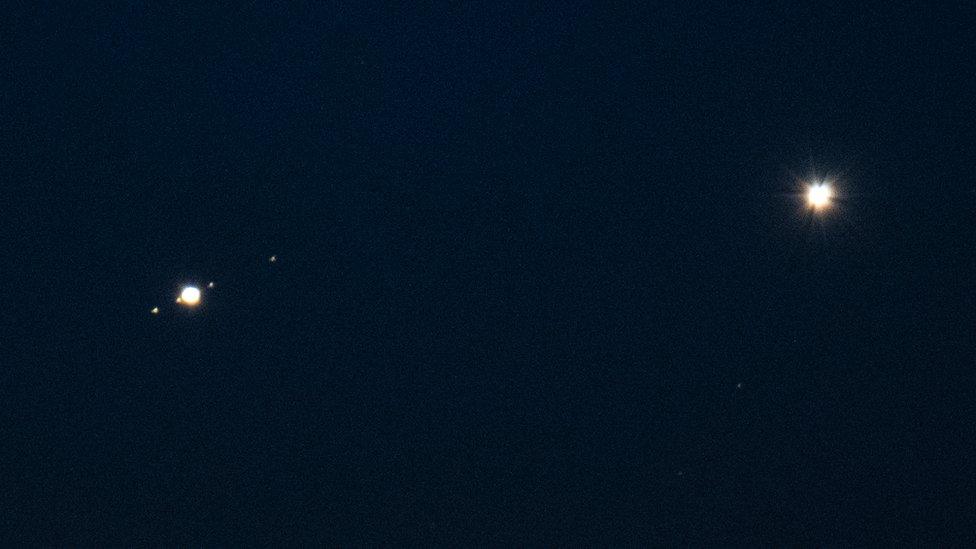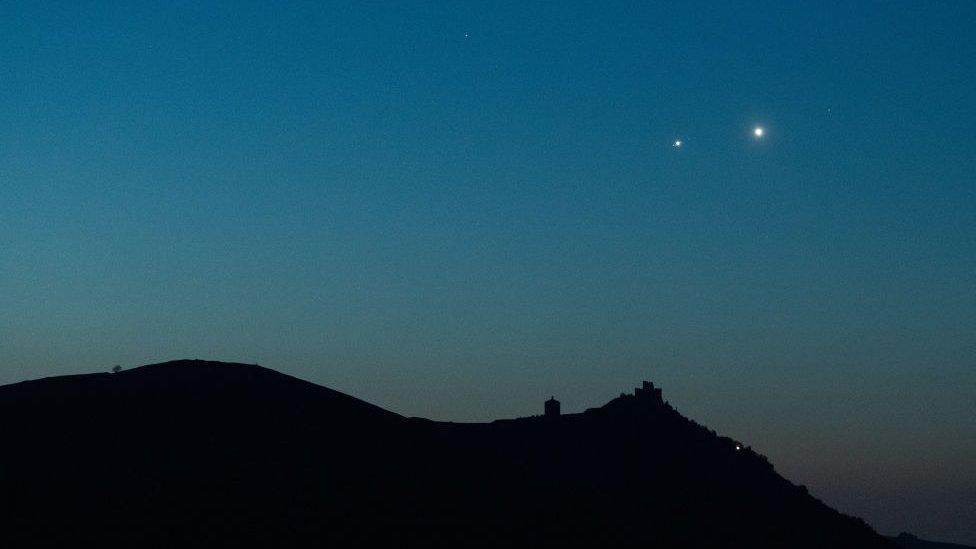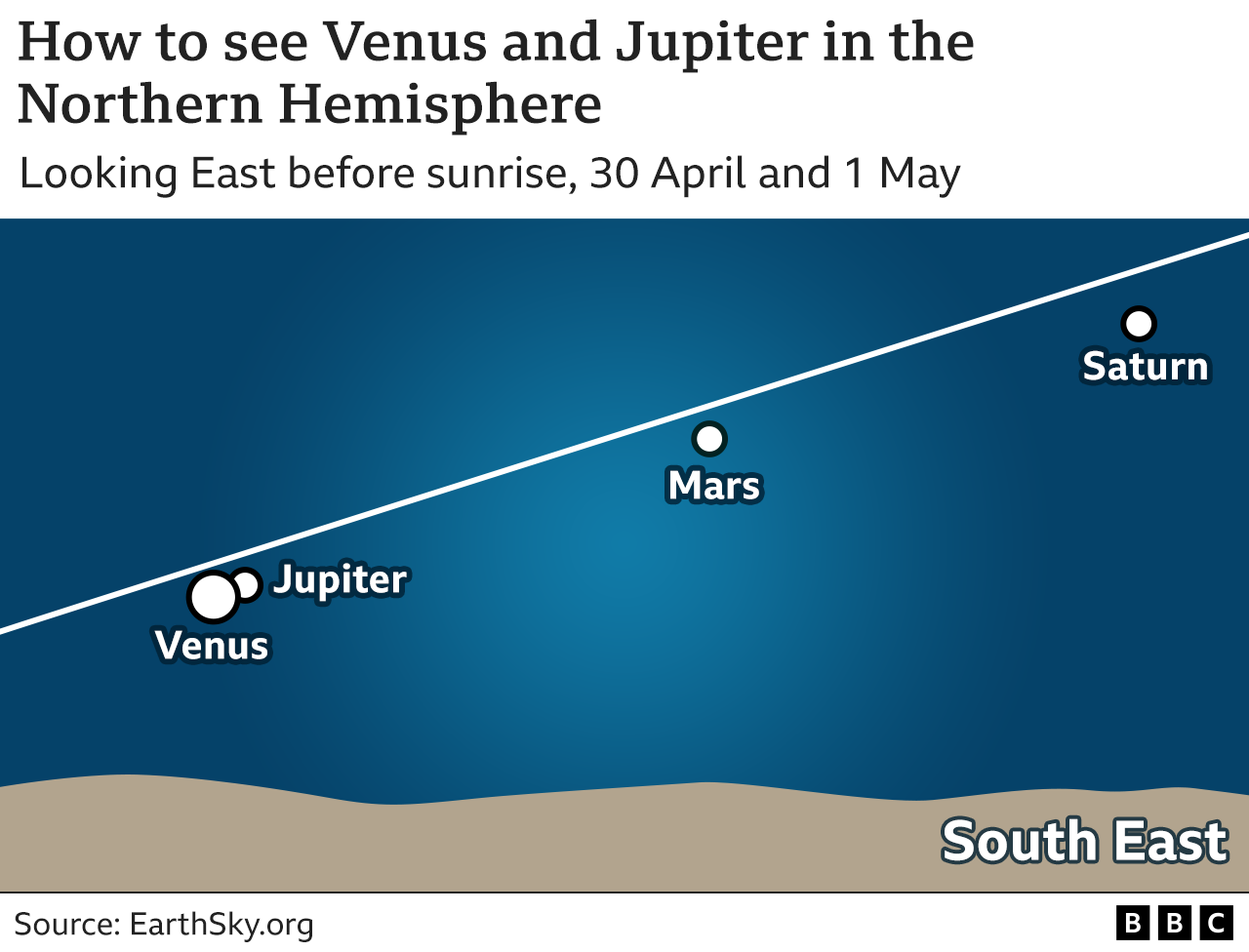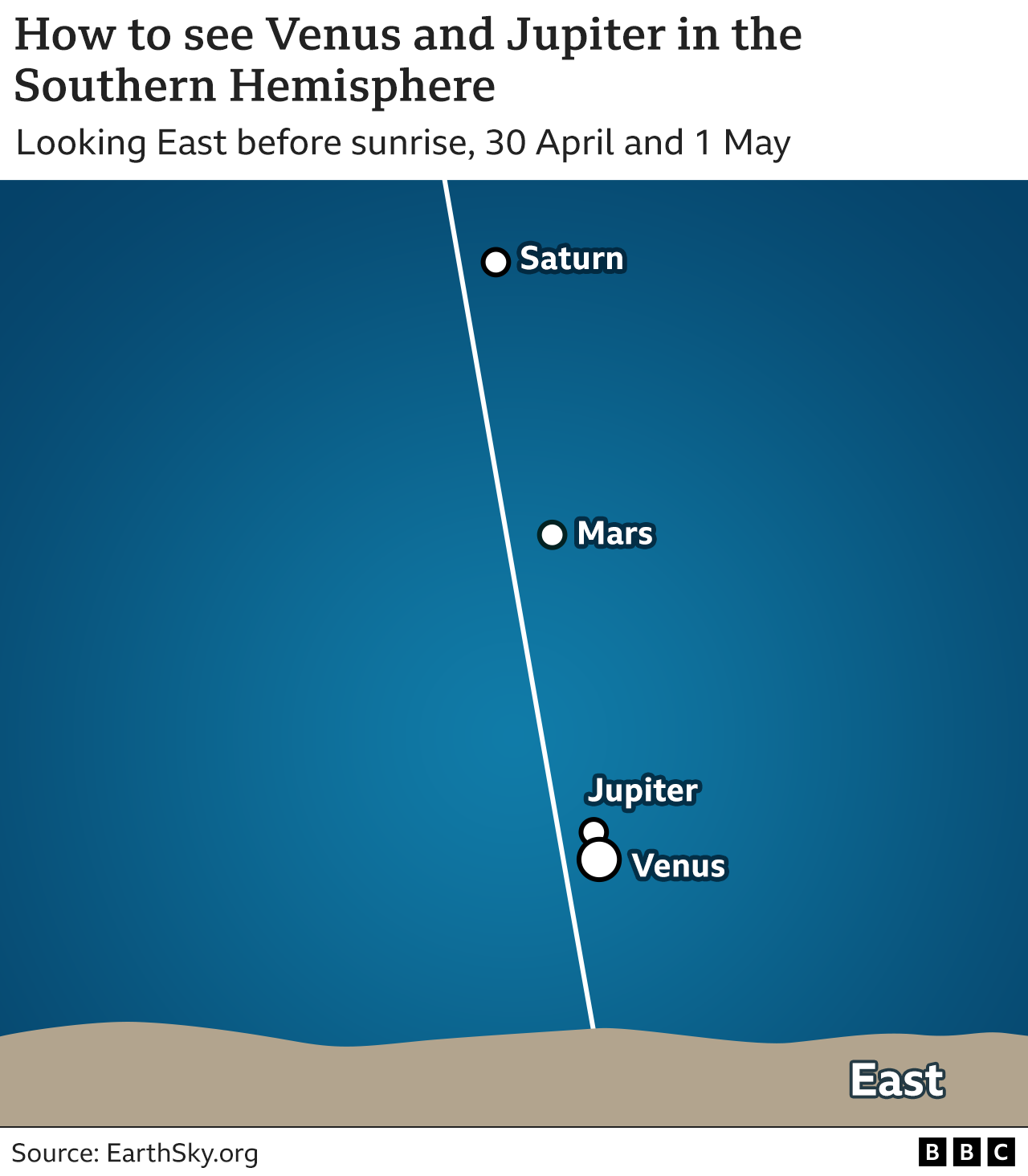Venus and Jupiter Conjunction: Planets to almost touch in night sky
- Published

Venus and Jupiter have been drawing closer together all week
Look up in the sky at the right moment this weekend and you could see two of the solar system's brightest planets almost touching.
Venus and Jupiter will be millions of miles apart, but from Earth they will appear close to colliding.
This planetary conjunction happens annually but this year they will appear much closer than usual.
The same spectacle won't occur again like this until 2039.
Just the naked eye or binoculars should be enough to see it in a clear sky.
After Saturday, the two planets will go their separate ways as they drift apart in the coming days.
"It's very exciting for astronomers and it's a really great opportunity for people to get out and have a look," explains space scientist and chief stargazer at the Society for Popular Astronomy Prof Lucie Green.
What is a planetary conjunction?
A conjunction is when two planets appear close together or even touching in the Earth's night sky.
In the days running up to Saturday, Venus and Jupiter have been gradually coming together in the sky.

The two planets rise side-by-side over Rocca Calascio castle in Italy early on Saturday

The actual orbit of the planets are about 430 million miles apart but their apparent alignment seen from Earth gives the illusion that they are touching.
How can I see it?
The peak time to see it was Saturday at around 05:00 BST. But it will still be visible on Sunday and in the coming days as the planets slowly move apart.
Pre-dawn is best, looking east before the Sun rises.

Social media user @DebraJ54 took this photo in Humboldt, Tennessee, on Saturday morning
The planets will be low down in the sky, close to the horizon, and hills and buildings will block the view. If you can, find a high spot and look for two dazzlingly bright spots very close together.
"The planets will differ in their brightness. Venus is brighter than Jupiter so it will look dazzlingly bright when you see it. Jupiter will be slightly fainter, about one-sixth of the brightness of Venus," explains Prof Green.
She suggests using an app to help navigate your way around the skies.

And if you have telescope, you might be able to make out some structure in the atmosphere of Jupiter or some of its largest moons.
The conjunction can be seen from both of Earth's hemispheres at different times of day and night.
Those observing with a telescope may also be treated to a view of Mars and Saturn forming a line of four planets.
Prof Green says she plans to be up and out of bed to watch it from the UK.
"But if I do miss it on Saturday morning, I'm not going to be too worried," she explains.
"In the coming days the two planets start to get further and further apart - So I will still be able to see them."

Did you capture images of the planets? If you are happy to share them you can send them here
Please include a contact number if you are willing to speak to a BBC journalist. You can also get in touch in the following ways:
WhatsApp: +44 7756 165803
Tweet: @BBC_HaveYourSay, external
Please read our terms & conditions and privacy policy
